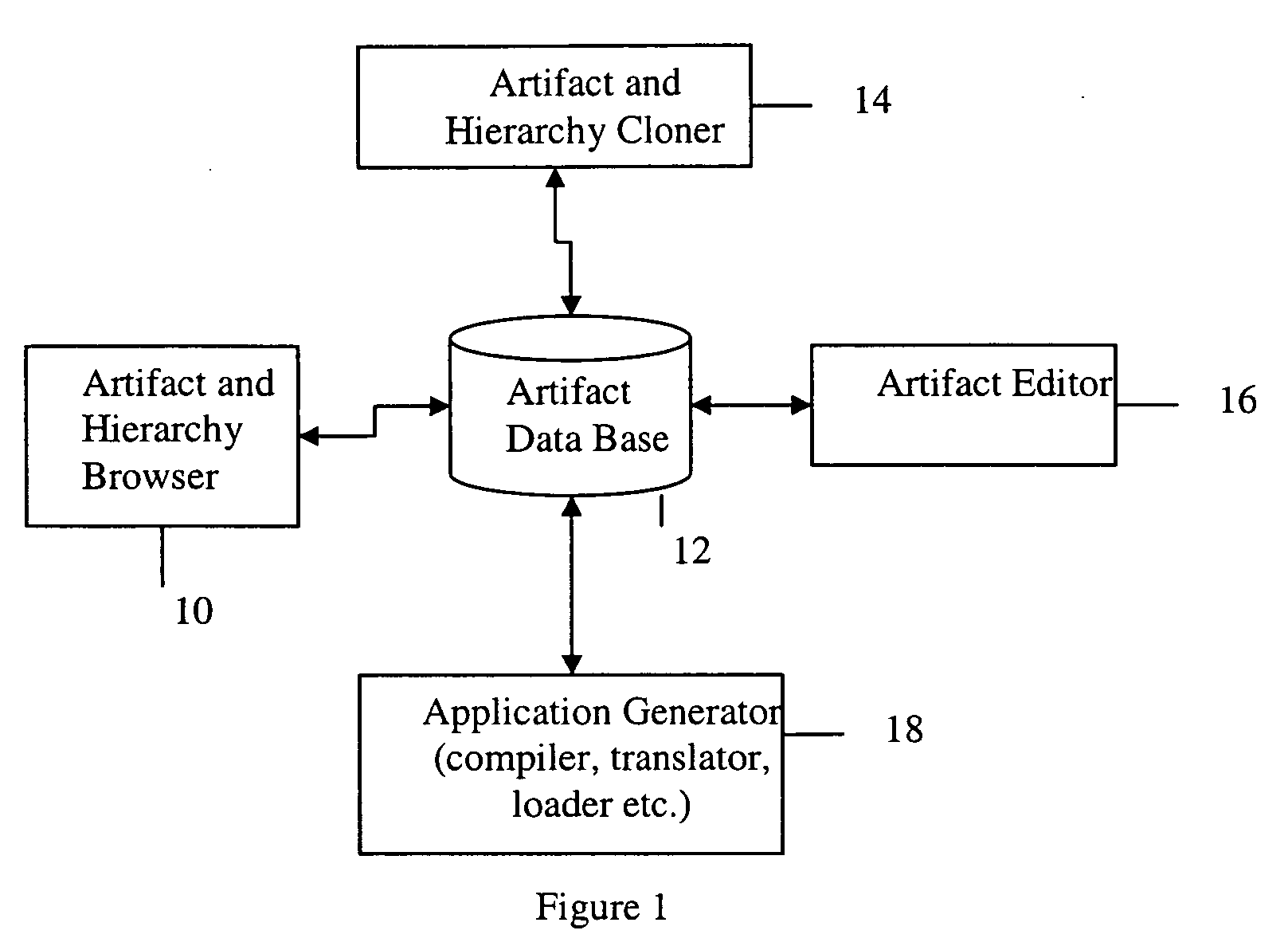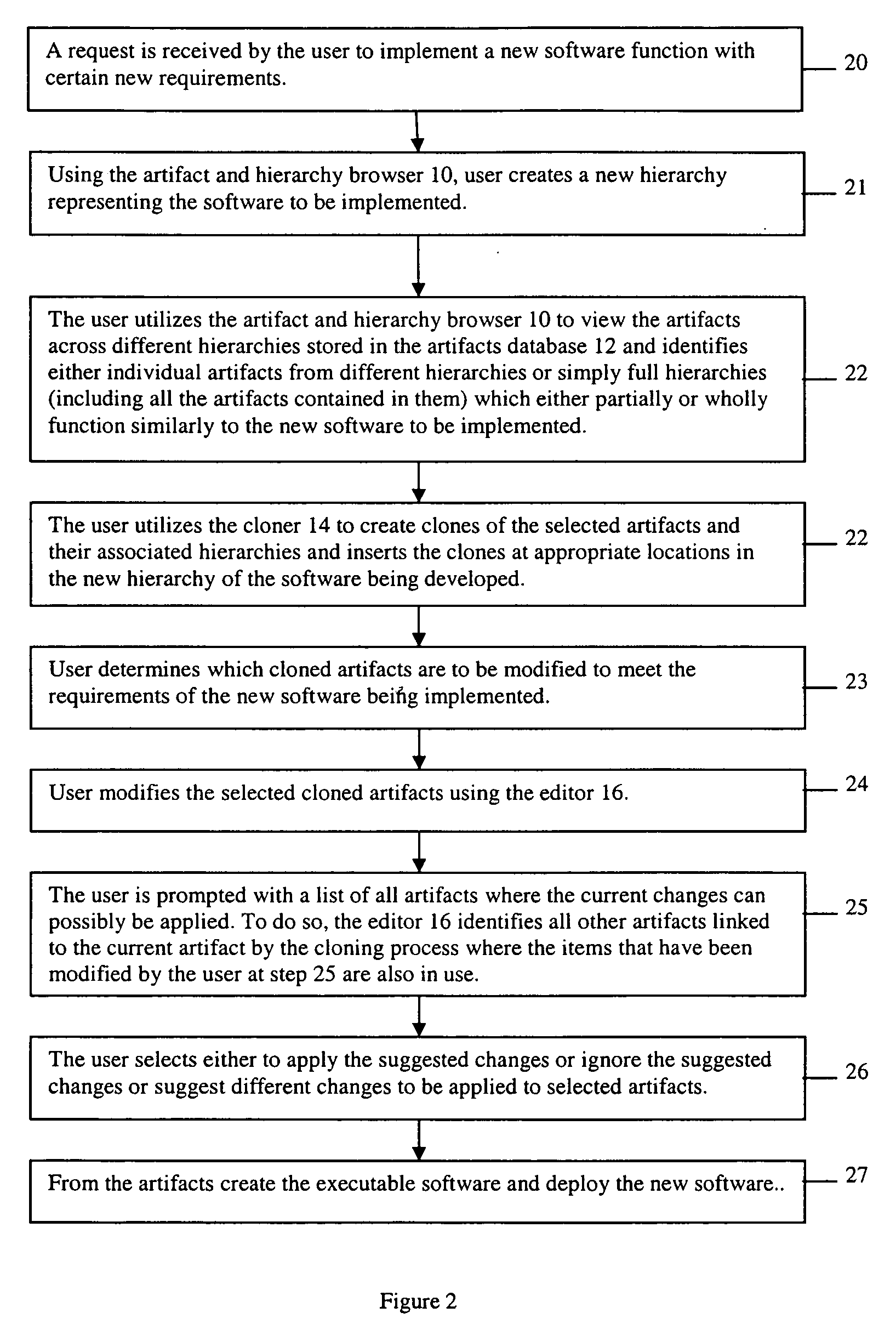Apparatus and method for employing cloning for software development
- Summary
- Abstract
- Description
- Claims
- Application Information
AI Technical Summary
Benefits of technology
Problems solved by technology
Method used
Image
Examples
Embodiment Construction
[0015] The present invention provides a method and apparatus for design, development and deployment of software quickly and cheaply. The proposed invention also applies to the maintenance and modification of software to meet any new requirements. In accordance with the present invention, new software is created by cloning hierarchies of existing artifacts and modifying them to meet the requirements of software being implemented. One of the most important features of the proposed cloning based method, as will be discussed below, is the ability to keep the cloned artifacts up to date by propagating changes to artifacts from one clone to another by generating prompts to the user.
[0016] Before we discuss the details of the invention, it is important to note that an “artifact” is a general term used through the application to refer to one or more classes, objects, subprograms, procedures, subroutines, functions, co-routines, methods, components, or even another program. Note that each a...
PUM
 Login to View More
Login to View More Abstract
Description
Claims
Application Information
 Login to View More
Login to View More - R&D Engineer
- R&D Manager
- IP Professional
- Industry Leading Data Capabilities
- Powerful AI technology
- Patent DNA Extraction
Browse by: Latest US Patents, China's latest patents, Technical Efficacy Thesaurus, Application Domain, Technology Topic, Popular Technical Reports.
© 2024 PatSnap. All rights reserved.Legal|Privacy policy|Modern Slavery Act Transparency Statement|Sitemap|About US| Contact US: help@patsnap.com










